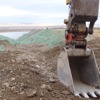Environmental decision making relies on an informed understanding of communities and ecosystem processes as well as species-specific knowledge of a particular ecoregion. Scientists characterize flora and fauna to better understand species’ life histories in relation to their habitats and assess impacts related to habitat disturbance or contaminant exposure. Information gained from these studies is important to federal, state, and tribal governments in assessing declining and protected flora and fauna.
EAS works with clients to preserve important biological resources, minimize impacts, and/or develop mitigation plans to restore the resource. We direct, lead, and perform assessments of species abundance, condition, and distribution. Our team specializes in surveying and assessing rare plant/vegetation communities, birds, mammals, invertebrates, and herpetofauna in the shrub-steppe ecosystem and inland Northwest waterways.
We offer experts in rare plant and wildlife identification and community characterizations, GIS mapping, conservation, and monitoring, as well as some of the most experienced fisheries subject matter experts in the Columbia River system. Our team provides the institutional knowledge gained from field and laboratory studies in this semi-arid region over more than 40 years. EAS staff have published findings in more than 100 articles in scientific journals, books, and conference proceedings.
 Environmental Restoration and Mitigation
Environmental Restoration and Mitigation
Using cost-effective methods to ensure high revegetation recovery rates

